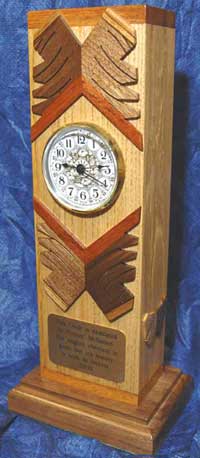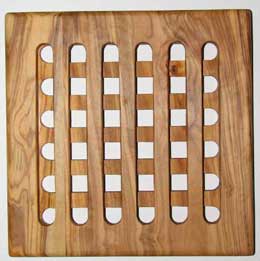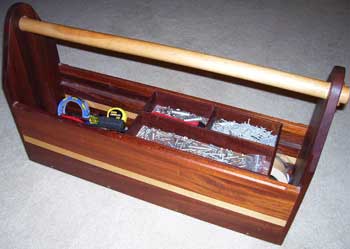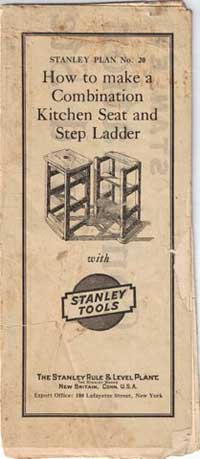
Playing Favorites with Hardwood
If you read Rob’s editorial, you know we received a LOT of responses to the query about what your favorite hardwood is. Here’s a smattering of those responses. – Editor
“I feel sorry for any wood lover who hasn’t worked with American chestnut! I acquired a two-foot long log (25″ diameter) out of an 85-year-old woodworker’s shop after he passed away (he used it as a chop block for over 40 years). His family wanted me to have it to make my space shuttle models. I brought it home and counted 248 annual rings. Wow! I use it for very special projects, and here’s what I made for the family that gave it to me.” – Scott Phillips
“My favorite hardwood is walnut, when I can find it. Not easy to find in Nova Scotia.” – John VanVeen
“There is an old saying that there is two kinds of wood, walnut and firewood. Need I say more?” – Leland Sanders
“My favorite hardwood is sapele. Put a layer of yellow shellac on it and then clear urethane, and you have a near match to antique cherry, etc., and it works like a dream, which cherry does not.” – Ted Darby
“By far my favorite wood is red oak. My main activity is scroll sawing. This wood cuts clean, sands to a shine if I want, and finishes like a dream. Many of my craft show customers know and/or recognize oak wood, and that helps with my sales.” – Norm Nichols
“My new favorite is bubinga. It turns like black walnut but has the cherry color but, with the quilting, a very special grain pattern.” – Ralph McCutcheon
“My favourite hardwood would have to be kauri, which is indigenous to New Zealand and, as I’m in bonny Scotland, I don’t think I shall be seeing a sample any time soon. It’s a protected species, and it’s my understanding that it can’t be exported, but it’s a beautiful wood. The colour and grain are superb.” – Steve Matthews
“My favorite hard wood is maple. I like the way I can turn it down or make clocks out of the natural stumps. I don’t use it so much in boards from the lumberyards, just work the trees I find.” – Pat Taylor
“Actually, I have two favorites. However, I’m not sure how hard they have to be to be classified as hardwoods. The first is padauk, and the second is quartersawn sycamore.” – Jerry Kaplan
“Over the past 53 years, I have made many projects using an assortment of hardwoods. Of these, I would have to put ash at the top of the list. Ash is available in long, clear pieces that don’t warp and it is reasonably priced. It is easy to work with and finish. It has a beautiful grain and takes a stain very nicely. It has the grain of oak, but isn’t as porous, so when you finish it, the complete surface is very smooth.
“My second best is olive and carob. The beauty of olive is unsurpassable, and you are able to glue it and you are unable to find one board from the next unless you look at the end. The carob wood is also very beautiful and easy to work with, and it is very hard and dense like olive wood. The mulberry wood is also a very nice hardwood to work with. It is clear of any knots and can be planed in any direction. To obtain olive, mulberry and carob wood, you have to live in an area where they are grown and be lucky enough to scavenger them when they are cut down.” – Bill Wolf
In addition to his photo of an olive wood trivet, Bill also sent a photo of a hall tree made from grapefruit wood – check out this eZine’s Reader’s Project Gallery section for his further description of this wood and this project. – Editor
Woods for Toolbox
And, speaking of wood, one of the questions in last issue’s Q&A section asked what species were appropriate to use for a toolbox. This respondent shares what he chose. – Editor
“I just read the article on “Wood Species for Toolbox” and want to share a picture of a toolbox I built from mahogany and maple.” – Randy Morse
Everything New is Old Again?
The Hoosier Step Stool featured in Free Plans was based upon an antique item – for which this reader said he found the original plans. – Editor
“Here is the original plans for the step stool from Stanley Tools; about 1930?” – Harvey Helm










